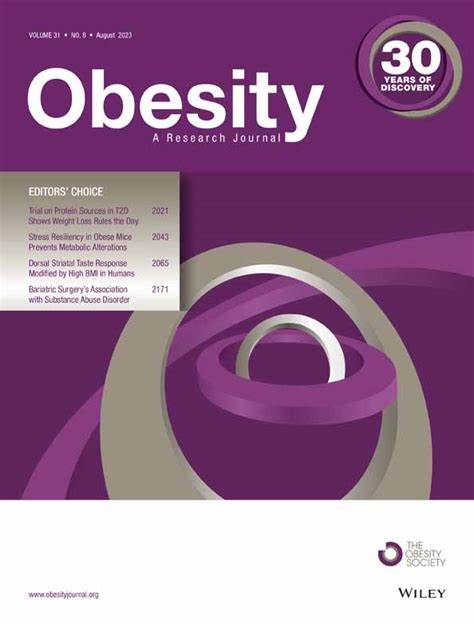Time-restricted eating affects human adipose tissue fat mobilization
Abstract
Objective
Time-restricted eating (TRE), a dietary approach that confines food intake to specific time windows, has shown metabolic benefits. However, its impact on body weight loss remains inconclusive. The objective of this study was to investigate the influence of early TRE (eTRE) and delayed TRE (dTRE) on fat mobilization using human adipose tissue (AT) cultures.
Methods
Subcutaneous AT was collected from 21 participants with severe obesity. We assessed fat mobilization by measuring glycerol release in AT culture across four treatment conditions: control, eTRE, dTRE, and 24-h fasting.
Results
TRE had a significant impact on lipolysis (glycerol release [mean (SD)] in micromoles per hour per gram: control, 0.05 [0.003]; eTRE, 0.10 [0.006]; dTRE, 0.08 [0.005]; and fasting, 0.17 [0.008]; p < 0.0001). Both eTRE and dTRE increased lipolysis compared with the control group, with eTRE showing higher glycerol mobilization than dTRE during the overall 24-h time window, especially at the nighttime/habitual sleep episode (p < 0.0001). Further analysis of TRE based on fasting duration revealed that, independently of the time window, glycerol release increased with fasting duration (in micromoles per hour per gram: 8 h = 0.08 [0.001]; 12 h = 0.09 [0.008]; and 16 h of fasting = 0.12 [0.011]; p < 0.0001).
Conclusions
This study provides insights into the potential benefits of TRE on fat mobilization and may guide the design of future dietary strategies for weight management and metabolic health.


 求助内容:
求助内容: 应助结果提醒方式:
应助结果提醒方式:


